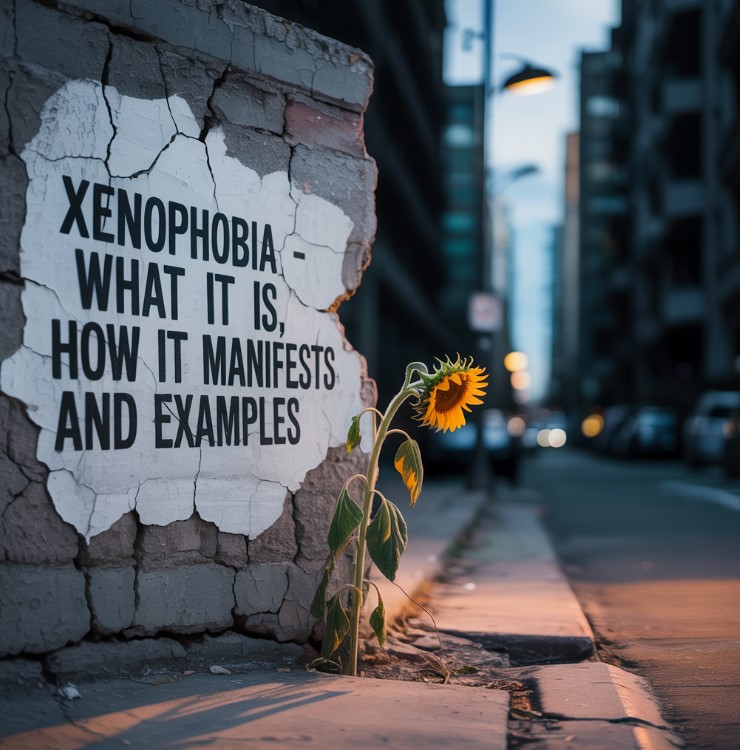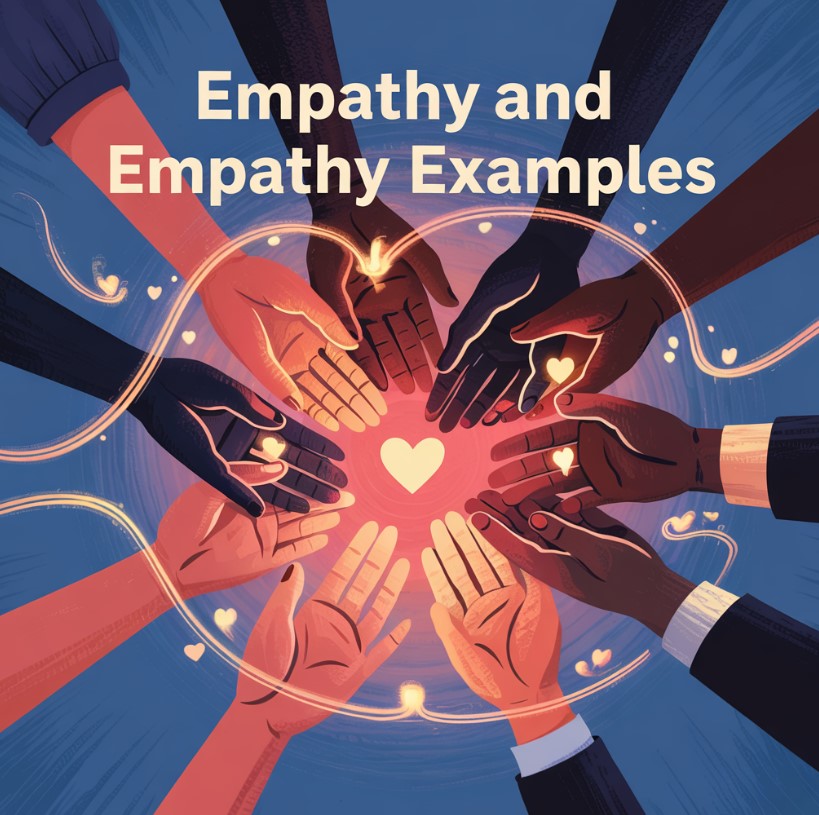Xenophobia – What it is, how it manifests and examples

Contents
This section describes xenophobia, including its definition, typical manifestations, and historical examples. Additionally, we examine the connections between xenophobia and racism, as well as discriminatory behaviors.
Xenophobia fragments communities, encourages animosity and marginalization, and diminishes cultural variety.
What is Xenophobia ?
Xenophobia refers to the intense fear, dislike, or hostility toward individuals from different countries or cultural backgrounds. This emotion can result in prejudice and varying degrees of aggressive actions.
It can manifest in severe and aggressive forms that may result in criminal acts such as homicide or assaults, as well as in milder ways that involve exclusion or dismissal. A prevalent form of it involves discrimination based on racial differences, commonly known as racism.
Xenophobia is an emotion that is often connected to preconceived and oversimplified ideas about various social groups.
It is frequently intensified by a lack of knowledge, personal anxieties, and societal upheaval. This generally results in detrimental effects on community cohesion and the valuing of cultural differences.
Key points
- Xenophobia involves the fear, dislike, or rejection of individuals from cultures that differ from one’s own.
- It often manifests as discriminatory behavior, social marginalization, hateful language, or physical aggression against people or groups seen as different.
- It stems from biased attitudes and is commonly motivated by a lack of understanding, personal anxieties, fears concerning economic or political issues, and a wish to preserve one’s own cultural heritage.
- It undermines peaceful coexistence, perpetuates social disparities, obstructs community unification, and infringes on core human rights.
- It can serve as an ideological foundation for extreme acts of violence, such as genocide.
Manifestations of Xenophobia
The most frequent expressions of xenophobia include:
Discrimination in employment. Immigrants are often denied jobs or receive lower wages than locals, despite having equivalent skills, solely because of their national or ethnic background.
Rejection of refugees. Protesting against the construction of shelters for those seeking safety from conflicts or humanitarian crises.
Criminalization of immigrants. Linking foreigners to criminal activities in public narratives, thereby fostering an environment of animosity and bias towards these groups.
Violence targeting ethnic minority communities.Physical or verbal attacks on individuals from other countries.
Hate speech on social networks. Circulating narratives that denigrate outsiders and reinforce clichés.
Refusal of medical care.Withholding healthcare from non-nationals in medical institutions or mandating supplementary prerequisites owing to their citizenship or migratory standing.
Historical examples of Xenophobia
Historical instances of xenophobia include:
Oppression of Jews under the Nazi regime (Germany, 1933-1945). The Nazi regime endorsed an ideology centered on Aryan racial supremacy, degraded Jews, and attributed economic and social issues to them.The Nazi rhetoric was the catalyst for policies of exclusion, concentration camps, and the genocide of six million Jews during the Holocaust.
The Chinese Exclusion Act was a U.S. legislation in effect from 1882 to 1943 that restricted Chinese immigration. The Chinese Exclusion Act was motivated by xenophobic attitudes that viewed Chinese immigrants as economic rivals and groups unable to integrate into American society.
Apartheid (South Africa, 1948-1994). This formal system of racial segregation and discrimination divided society along racial lines, offering special privileges to whites while disadvantaging blacks, Native Americans, and people of mixed race. This was a policy intended to preserve political, social, and economic dominance under the control of the white minority.
The expulsion of the Moors (Spain, 1609-1614). The descendants of Muslims who had converted to Christianity were perceived as a threat to Spanish cultural and religious identity, resulting in their mass deportation during the reign of Philip III.
Massacre of Haitians in the Dominican Republic (1937). Rafael Trujillo’s government directed the slaughter of thousands of Haitians along the border, motivated.
Differences between Xenophobia and Racism
Xenophobia and racism both represent forms of rejection, discrimination, and exclusion aimed at specific populations. However, xenophobia and racism employ distinct methods or strategies.
Xenophobia involves the rejection of individuals seen as outsiders or foreign to a specific culture or nation, irrespective of their racial identity. Racism, conversely, stems from the belief in the superiority of one race over others and involves discrimination against individuals based on particular physical traits, like skin color.
The sources of these biases differ too. Xenophobia originates from the fear that foreigners endanger the cultural identity or welfare of one’s own community. Racism, in contrast, is driven by belief systems aimed at legitimizing racial inequalities and the subjugation of specific populations, drawing on fabricated scientific theories that assert the inferiority of certain races.
While xenophobia and racism are separate concepts, they often intersect in real-world contexts. Xenophobia transforms into racism when it targets foreigners based on their racial attributes.Yet, xenophobia does not necessarily involve racism, as seen in situations where foreigners sharing the same racial identity are rejected for cultural reasons.
Discrimination
Discrimination involves the unfair treatment of a group of people based on prejudicial attitudes. Discrimination entails the unfair or unequal treatment of people or groups based on attributes like ethnicity, nationality, gender, sexual orientation, religion, disability, and other similar factors.Discrimination’s unequal treatment can manifest in various domains, including education, employment, and access to essential services, often contributing to ongoing social and economic disparities.
Xenophobia refers to a particular type of prejudice that discriminates against individuals perceived as outsiders or culturally dissimilar due to their ethnic or national background. Although discrimination can stem from various sources, including gender, religion, or disability, xenophobia specifically addresses biases tied to cultural or national differences.
International Legislation on Xenophobia
Various international legal instruments and agreements exist to combat xenophobia, emphasizing the principles of equality and non-discrimination. These legal frameworks aim to safeguard individuals against xenophobic biases and play a vital role in tackling intolerance across different parts of the globe.
Some international laws and agreements specifically address xenophobia:
- Universal Declaration of Human Rights (1948). It establishes equal rights and freedoms for everyone while prohibiting discrimination based on national origin and other forms of exclusion, including xenophobia.
- International Covenant on Civil and Political Rights (1966). Bans all forms of discrimination, such as xenophobia, while ensuring equal rights for every individual.
- International Convention on the Elimination of All Forms of Racial Discrimination (1965). Fights racial discrimination and xenophobia by calling on governments to eradicate these issues and safeguard those impacted.
- UN Declaration against Racism and Xenophobia (2001). Acknowledges xenophobia as an expression of intolerance and advocates for actions to combat it, particularly in settings with cultural diversity.











